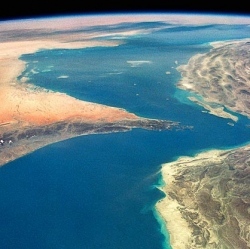
Explaining how early Earth was warm and habitable for life beginning more than 3 billion years ago even though the sun was 20 percent dimmer than today — may not be as difficult as believed, says a new University of Colorado Boulder study.
In fact, two CU-Boulder researchers say all that may have been required to sustain liquid water and primitive life on Earth during the Archean eon 2.8 billion years ago were reasonable atmospheric carbon dioxide amounts believed to be present at the time and perhaps a dash of methane. The key to the solution was the use of sophisticated three-dimensional climate models that were run for thousands of hours on CU’s Janus supercomputer, rather than crude, one-dimensional models used by almost all scientists attempting to solve the paradox, said doctoral student Eric Wolf, lead study author.
"It’s really not that hard in a three-dimensional climate model to get average surface temperatures during the Archean that are in fact moderate," said Wolf, a doctoral student in CU-Boulder’s atmospheric and oceanic sciences department. "Our models indicate the Archean climate may have been similar to our present climate, perhaps a little cooler. Even if Earth was sliding in and out of glacial periods back then, there still would have been a large amount of liquid water in equatorial regions, just like today."
Evolutionary biologists believe life arose on Earth as simple cells roughly 3.5 billion years ago, about a billion years after the planet is thought to have formed. Scientists have speculated the first life may have evolved in shallow tide pools, freshwater ponds, freshwater or deep-sea hydrothermal vents, or even arrived on objects from space.
A cover article by Wolf and CU-Boulder Professor Brian Toon on the topic appears in the July issue of Astrobiology. The study was funded by two NASA grants and by the National Science Foundation, which supports CU-Boulder’s Janus supercomputer used for the study.
Scientists have been trying to solve the faint young sun paradox since 1972, when Cornell University scientist Carl Sagan — Toon’s doctoral adviser at the time — and colleague George Mullen broached the subject. Since then there have been many studies using 1-D climate models to try to solve the faint young sun paradox — with results ranging from a hot, tropical Earth to a "snowball Earth" with runaway glaciation — none of which have conclusively resolved the problem.
"In our opinion, the one-dimensional models of early Earth created by scientists to solve this paradox are too simple — they are essentially taking the early Earth and reducing it to a single column atmospheric profile," said Toon. "One-dimensional models are simply too crude to give an accurate picture."
Wolf and Toon used a general circulation model known as the Community Atmospheric Model version 3.0 developed by the National Center for Atmospheric Research in Boulder and which contains 3-D atmosphere, ocean, land, cloud and sea ice components. The two researchers also "tuned up" the model with a sophisticated radiative transfer component that allowed for the absorption, emission and scattering of solar energy and an accurate calculation of the greenhouse effect for the unusual atmosphere of early Earth, where there was no oxygen and no ozone, but lots of CO2 and possibly methane.
